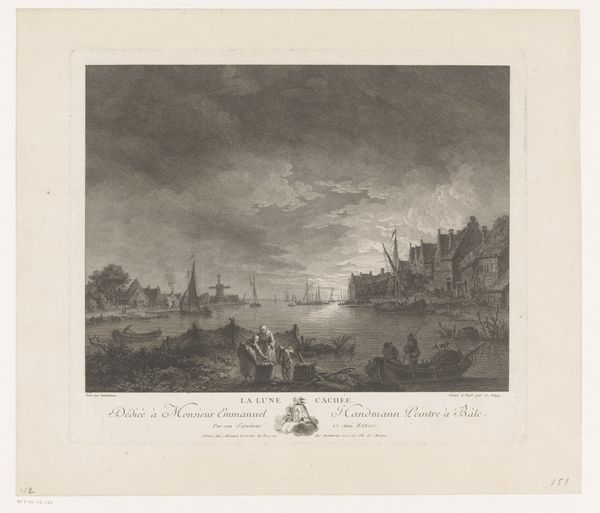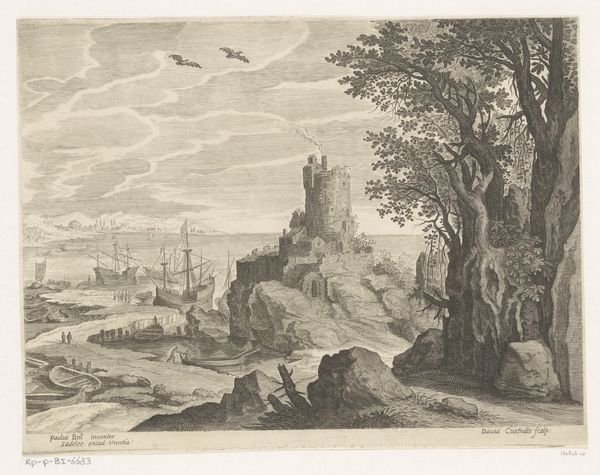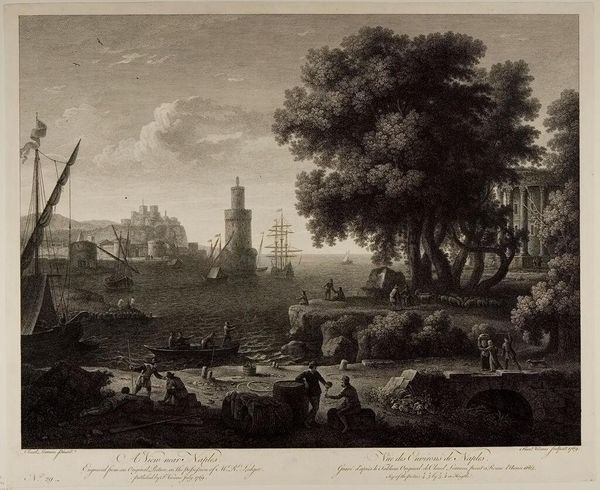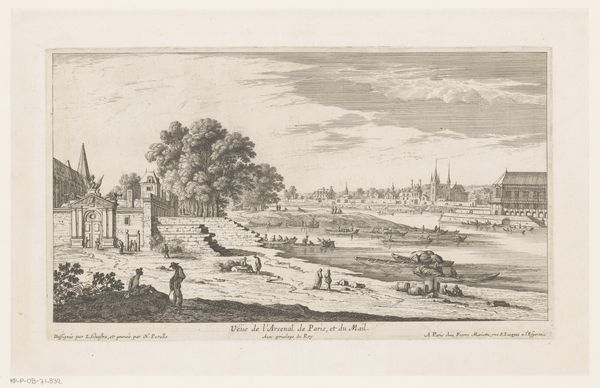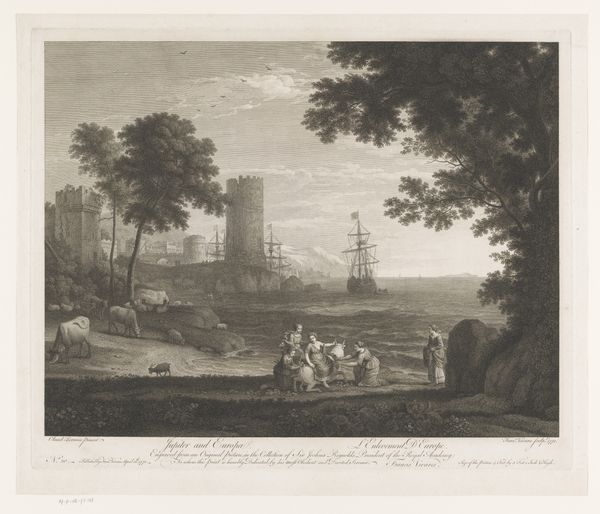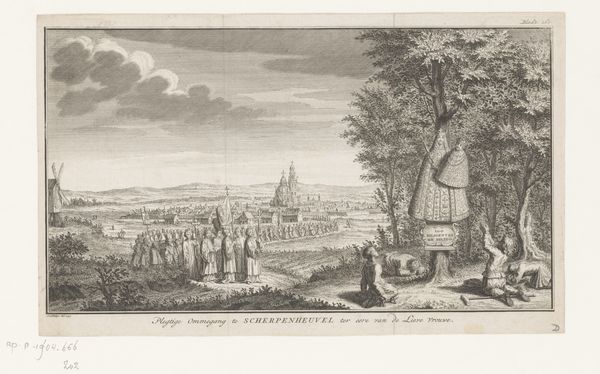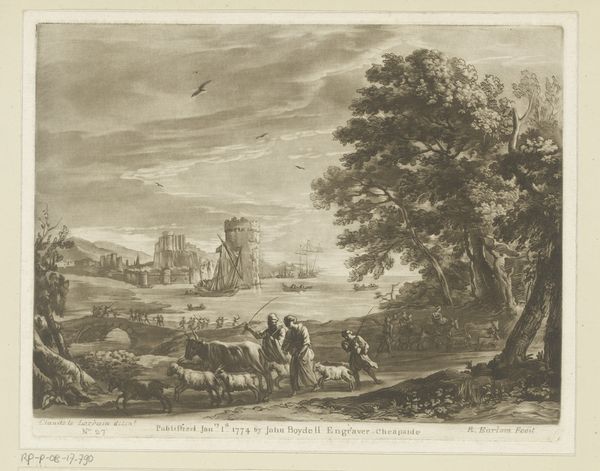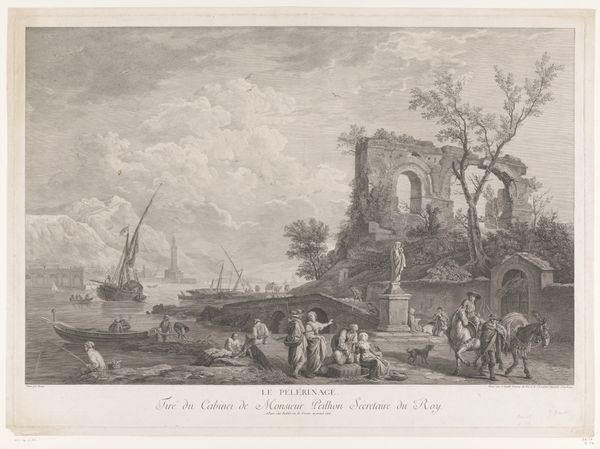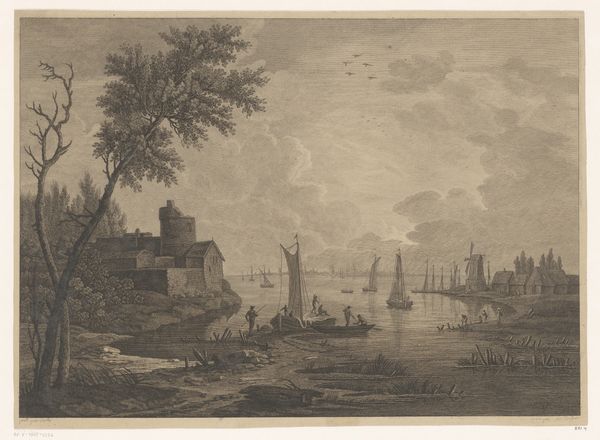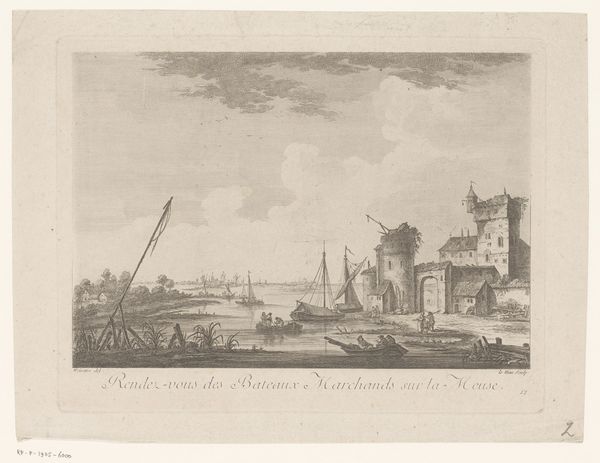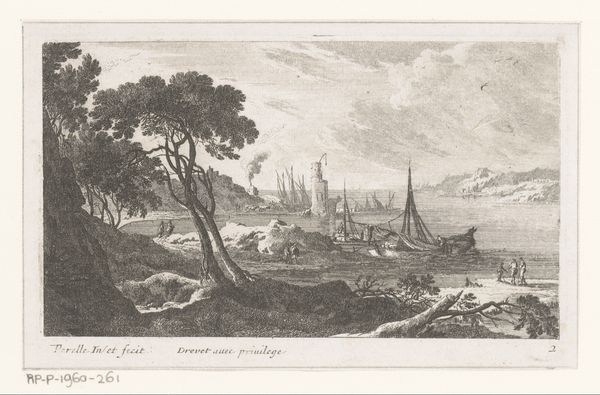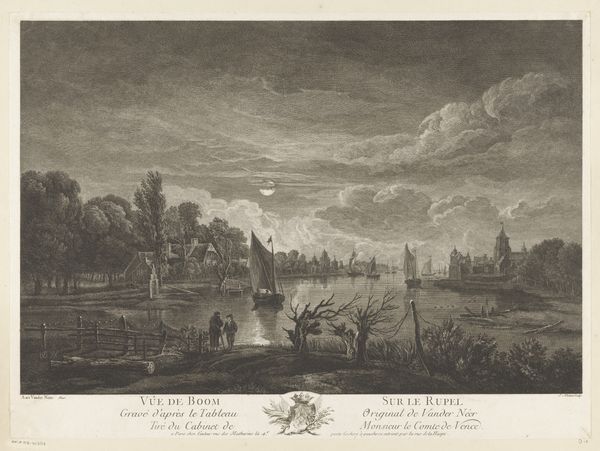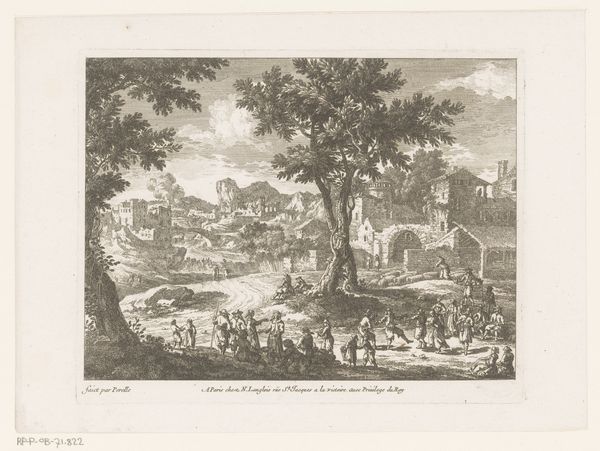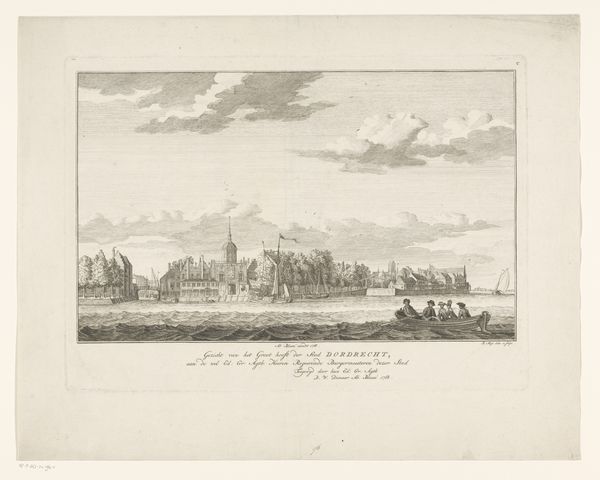
print, engraving
#
pencil drawn
#
light pencil work
#
neoclassicism
# print
#
pencil sketch
#
landscape
#
perspective
#
cityscape
#
pencil work
#
academic-art
#
engraving
Dimensions: height 500 mm, width 613 mm
Copyright: Rijks Museum: Open Domain
Curator: Ah, Naples, as seen through the eyes—and the engraving tools—of François Vivares. This print from 1769 captures the coastline with such incredible detail. What strikes you first about this cityscape? Editor: The stillness. It’s like a dream of a harbor. The light is so soft, and even though there are figures working in the foreground, there’s a serene quietude that pervades everything. A working waterfront made ethereal by masterful composition, rendered beautifully in monochromatic engraving, somehow making the light more magical. Curator: Exactly! Vivares wasn't just randomly sketching. He was steeped in Neoclassicism, that revival of classical aesthetics. So you have this picturesque scene imbued with a sense of order, perspective meticulously applied. Editor: I see the idyllic life juxtaposed with exploitation of the working class. In the foreground, the people performing manual labor are small, and yet their actions of loading heavy barrels are amplified. I can also tell you what he probably wasn’t seeing: the systemic oppression baked into these gorgeous port cities built on the backs of laborers. Did Vivares think of them as a mere aesthetic addition? Curator: Well, it’s tempting to cast a contemporary lens back onto the eighteenth century, isn't it? It also strikes me that the choice of engraving as a medium feels rather significant; an easily reproducible image that was distributed widely... to whom? Were such prints only seen by the elite classes, framing their "Grand Tour" experiences? Or were they viewed as a form of aspirational marketing for burgeoning commercial classes as well? Editor: It becomes, potentially, a kind of romantic propaganda then—a selective, aestheticized reality crafted and consumed by those detached from its physical costs. What strikes me too is how this perspective, this moment, is so purposefully chosen and mediated. A way to elide any sort of critical questioning, right? It's about reinforcing privilege and power, maybe? Curator: Perhaps, perhaps. Still, there's a haunting beauty in the delicate details, the hazy atmosphere, that whispers beyond the social commentary. It makes me consider the eternal lure of Naples as an intersection between the grit of existence and the sublime. Editor: A worthwhile perspective. In the end, perhaps its lasting power is its complicated, unresolved nature. It lets viewers choose where to look, and for what to yearn.
Comments
No comments
Be the first to comment and join the conversation on the ultimate creative platform.
